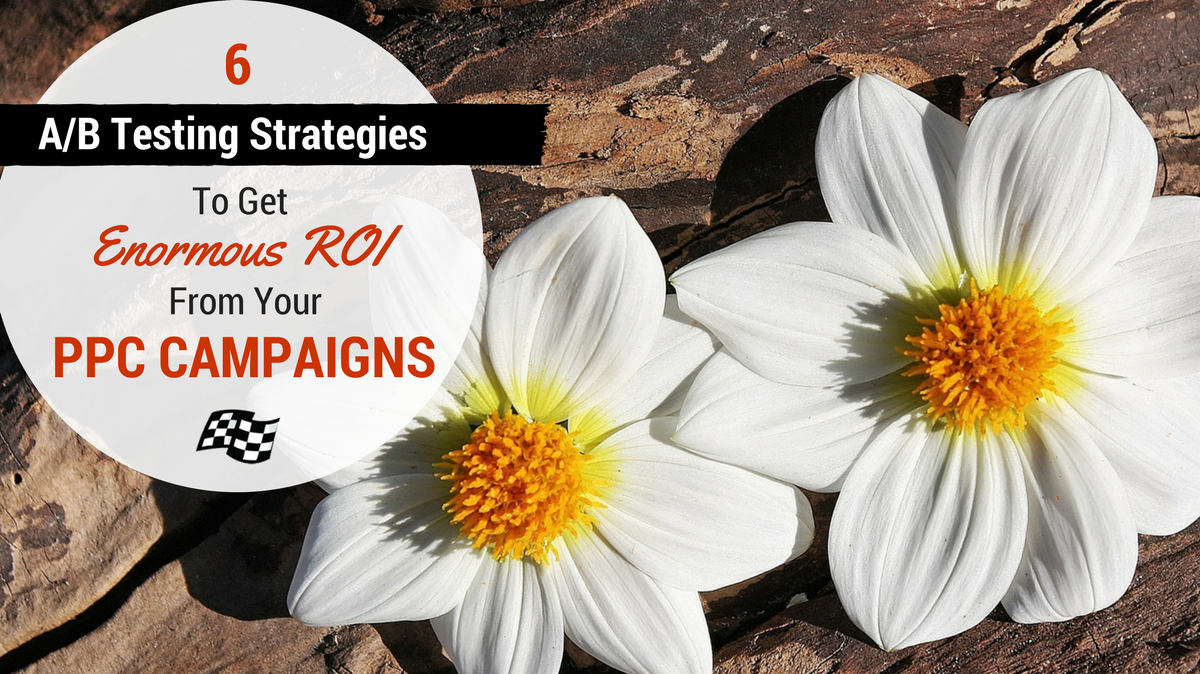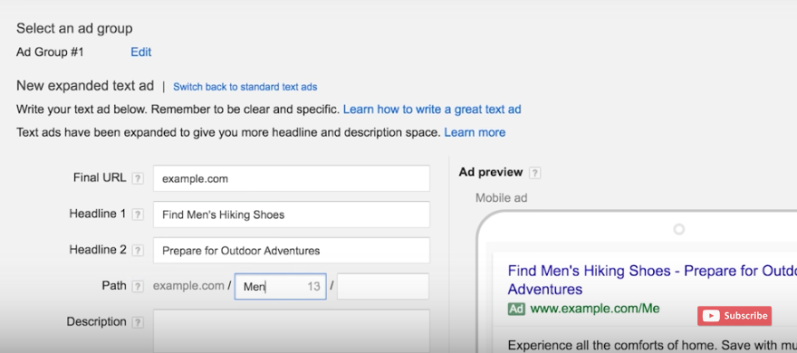
Split testing your PPC ads may look complicated, but the potential payoff for your time and effort is enormous.
Since most PPC ads are on-going investments, every small improvement can help gradually improve your ROI. Those small changes can really add up over time, even if they appear insignificant on the surface.
But without split testing, how will you know which changes to make? After all, small changes can also add up in a negative way as well. Do the wrong thing too many times, and you could end up in some real trouble.
Here’s how to make the most out of your PPC Campaign A/B testing, and give yourself the best chance at some real improvement:
 Here’s how to make the most out of your PPC Campaign A/B testing.
Here’s how to make the most out of your PPC Campaign A/B testing.
1. Follow PPC Best Practices
There’s no need to reinvent the wheel; following industry PPC best practices will help ensure that you’re on the right track:
- Define the goal for your ad, and determine what metrics you should be measuring. For example, if you want to build brand awareness, look at click-through rates. If you want to generate leads or sales, focus on conversion rate.
- Test one variable at a time. You can convolute your results if you attempt to test too many things at once. Focus on one variable before moving on to another.
- Test variations simultaneously. This avoids having time become a variant (e.g. seasonal factor).
- Don’t quit too soon. Run your ads long enough to gather a statistically significant number of results — you need at least a few thousand impressions to accurately analyze the data.
- Don’t wait until everything is perfect. Test your ads early on in the campaign, and test often so you can respond to changes in the market.
- Don’t go overboard with segmentation. Google’s Enhanced Campaigns allow for bid adjustments based on each dimension.
2. Test Your PPC Ad Copy
There are a few components in a PPC ad you can test, and you should definitely test them all. With the introduction of Google’s expanded text ad, you now have more flexibility in testing the various elements.
- Headline – In an Expanded Text Ad, you have two headlines to work with (separated by a hyphen), so you can test not only the copy but also the sequence of how they’re arranged. You can also test Dynamic Keyword Insertion static keywords in the headline.
- Description – Ensure that your description is relevant to the ad and not just generic “copy & paste” content. This is also a great opportunity to offer a unique value proposition to separate yourself from your competition.
- Display URL – While you can’t technically display different URLs for a single page, you CAN create multiple versions of a page using different URLs. Be sure you’re using clean, SEO-friendly URLs, and be sure that each URL is relevant to the landing page.
Within these elements, you can test the tone of the copy, the offer, the pricing, the call-to-action, the order of wording (e.g. On Sale Now vs. Now On Sale), and the formatting.
Some customers are price conscious, while others are service conscious, quality conscious, or risk averse. Test your messaging to find out what’s most attractive to your target customers, and don’t forget to use data from your other marketing channels.
3. Test Your Landing Pages

There’s more to consider than just the ad copy. In order to test every stage of your process, keep the ad copy the same and test using different landing pages.
If you’re running tests for an ecommerce site, then your landing pages will likely be a product or category page. Each of these presents a number of opportunities for split testing and optimization.
For a category page, consider testing the size of the images shown in your product thumbnails, or the length and/or content of the associated product descriptions.
Maybe you’re concerned that customers are having trouble locating the price of each item, in which case you would test whether or not increasing its prominence has any notable difference.
You could run similar tests on a product page, as well as testing the location of your “Buy” or “Add To Cart” buttons. Test whether or not it helps to include recommended or related products, and then test if it makes a difference which products you display.
And if your site offers product customization, perhaps the process is confusing or off-putting. Testing different user interfaces will help clear up any issues that you might be facing in that area.
Non-ecommerce sites with more traditional landing pages will want to take a bit of a different approach and focus more on split-testing web forms or signup pages. This can be something as simple as changing the color of the form itself or adding/removing fields.
And don’t be afraid to test things that seem obvious.
Maybe you think that sending all of your traffic directly to your web form is a no-brainer, but what if potential customers are hesitant because they’re unclear about the exact nature of your services?
Try testing a landing page where you present them with more information and THEN direct them to a form. You might be surprised.
You depend on your landing page to put your best foot forward when new traffic comes to your site, so taking steps to ensure that its perfect is crucial.
4. Test Your Offers

It’s likely that you’re driving cold traffic with your ad, so a special offer is a great way to entice new prospects to check out your website and make their first purchase.
There are different offers you can test — promo codes for specific dollar amounts, percentage discounts, free gifts with purchase, free shipping, etc.
Testing different offers can help you determine which ones are valuable to your customers, and thus what will entice them to buy more effectively.
You can also create a Merchant Promotions feed for Google Shopping ads to test different offers for a large variety of products.
5. Test Elements “Outside” of Your PPC Ad
Every business is different, and some factors may affect the success of your PPC campaigns more than others.
Here are a few ideas for testing these factors so you can dial in the effectiveness and ROI of your PPC ads:
 Test these elements “outside” your PPC ad
Test these elements “outside” your PPC ad
- Demographics and audience selection – Are you showing your ads to the right people? Test a few different demographics to make sure you’re driving relevant traffic to your landing pages.
- Geographic location – It’s possible that you’re creating dark spots in your geotargeting by over-localizing. Test wider search areas, and see if that improves your revenue.
- Mobile vs. desktop – Does your higher quality traffic come from mobile or desktop searches? Not sure? Better test and find out.
- Time – Try testing different days of the week or hours of the day, taking into account the time zones of your audience’s locations.
- Seasonal factors – This can include things such as holidays or special events.
6. Don’t Give Up!
It can be incredibly frustrating when you’re struggling to find that magic formula for PPC success, and the toughest part is that it’s different for everyone. Because no two accounts are the same, the only way you’ll ever find that sweet spot is if you keep at it.
So if you feel like you’ve tried every type of ad copy you can think of, try changing your landing page, or take a closer look at who you’re marketing to, and consider if there are any missed opportunities or wasted spending.
And if it seems like nothing is working, punch one of your keywords into Google, click on one of your ads, and go through the process yourself. You might just find that there’s something happening that you hadn’t considered.

